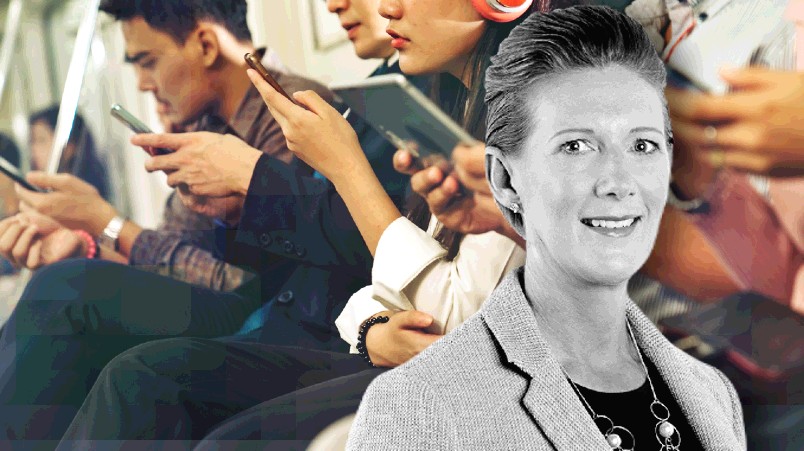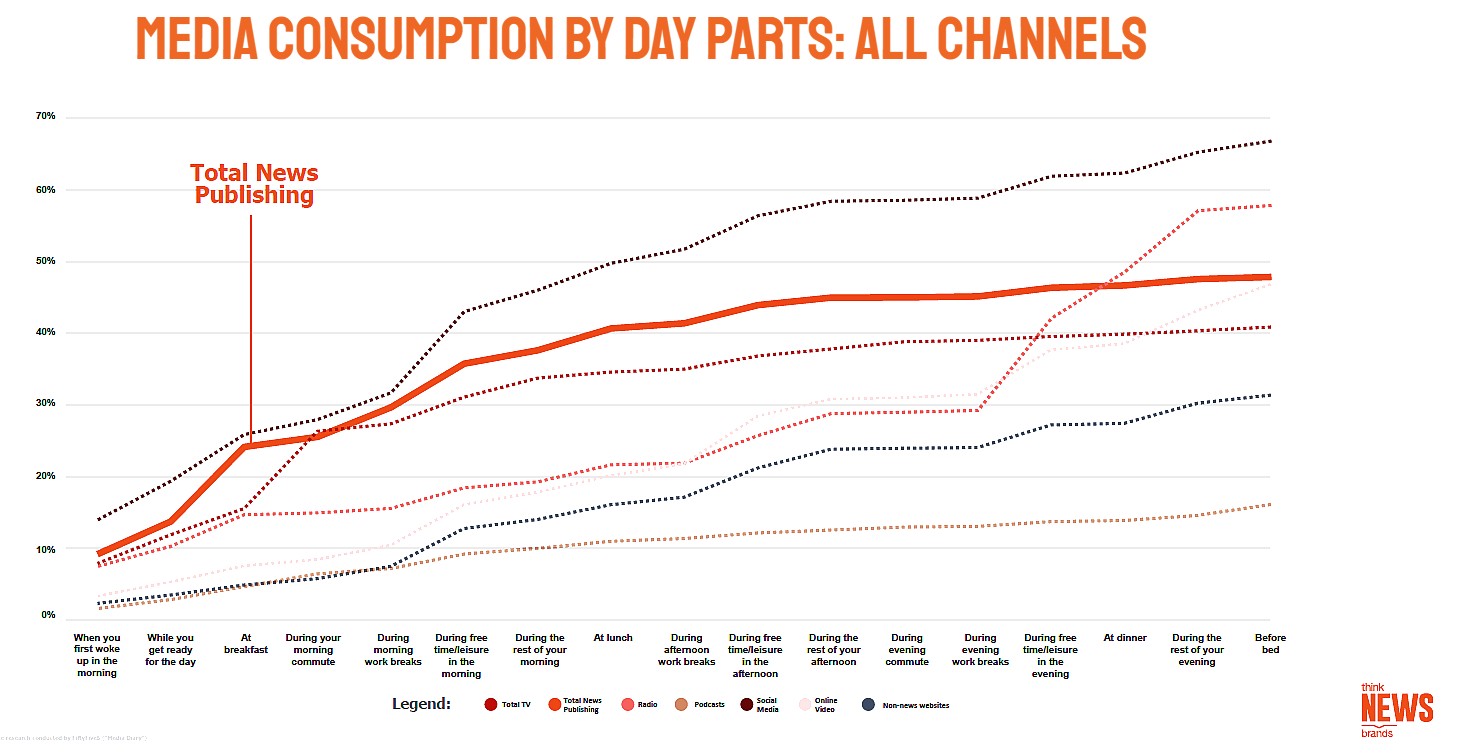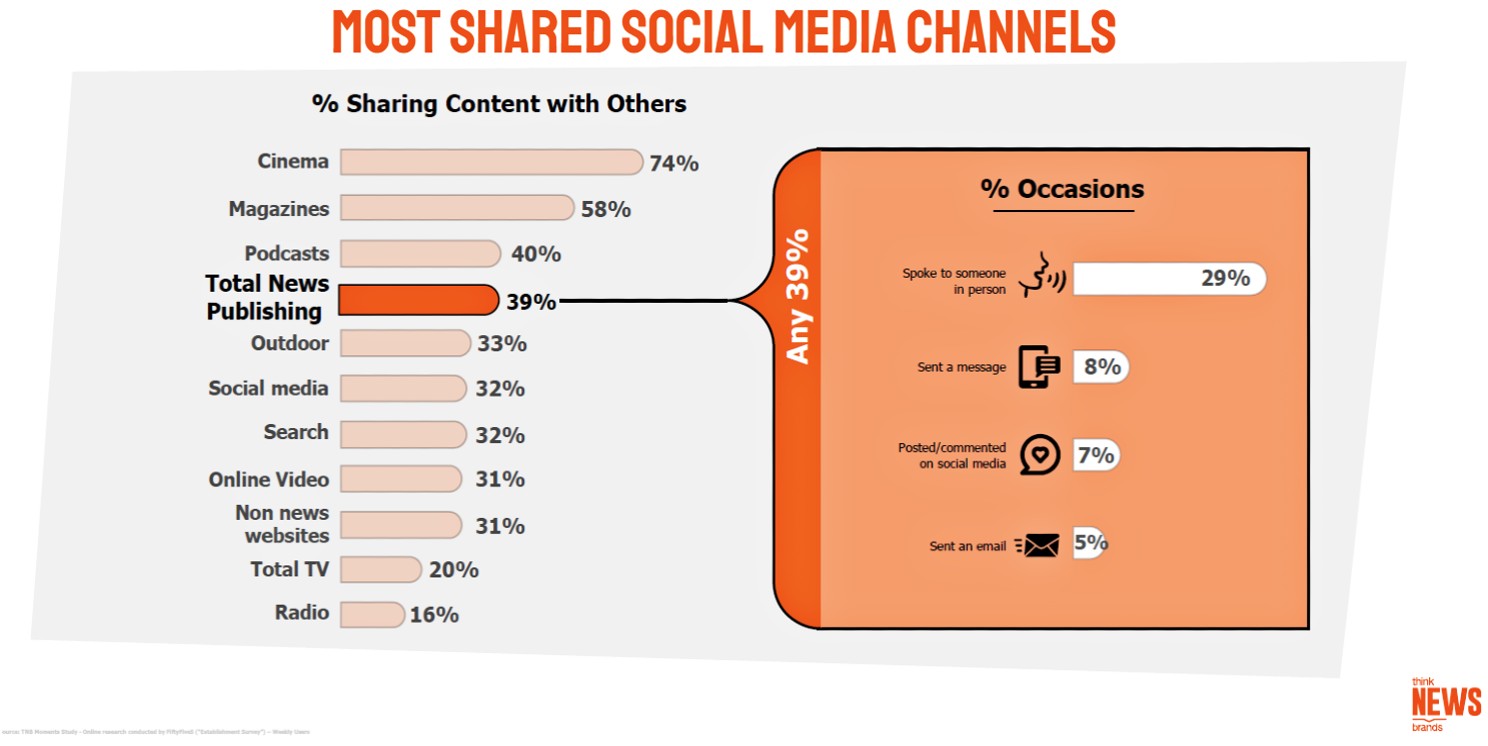Audience reach, ‘shareability’ get a makeover as new media study mythbusts consumption: TV at night, radio on commute, newsmedia all day

ThinkNewsMedia CEO Vanessa Lyons: "From a marketing background myself..we need to look beyond isolated metrics. Reach is just your starting point. We shouldn't be buying audiences based on size alone."
When Vanessa Lyons presented a new three-tier research study at the Marketing Leaders Summit last week on how the public consumes all media throughout the day, their mindsets and how different channels trigger “shareability” – note social media is not as dominant as many assume – she got an unexpected response from brand owners, particularly in retail, banking and the services sector. “You don’t typically get a lot of feedback at these things but marketers were quite vocal afterwards – they said it was thought-provoking on the futility of pursuing high-reach audiences if their [consumers] primary intent is distraction,” said Lyons who commissioned the study as CEO of ThinkNewsBrands. Somewhat refreshingly, the study doesn’t spruik one channel as the powerhouse solution for everything although it does challenge the industry’s preoccupation for unqualified audience reach as a lead driver when chasing consumers to land advertising messages.
There is a perception in market that the only media that’s shared is social media and online video. There are a multitude of ways that people are sharing.
Remember dark social a decade ago? And word-of-mouth – the most potent of all marketing channels that has been all but sidelined because it’s terribly hard to measure? They’re a couple of old-new ideas that have re-surfaced in a major study looking to qualify media channel consumption and behaviour - beyond topline audience reach numbers. The study unpacks all media consumption across dayparts and the mindset consumers are in when they’re swapping, chopping and diving into content and media of all types.
The three-tiered approach to this research program, developed by Fiftyfive5, the insights firm acquired last year by Accenture, challenges many assumptions about media consumption and channel planning with those with ears to hear.
The methodology blends digital media monitoring of 2.5 million minutes via a passive people meter on mobile devices, consumption diaries covering circa 8300 media consumption occasions to capture motivations and behaviour, and a national survey of 2000 people.
Audience reach challenged
The upshot? Nuanced and qualitative assessments beyond topline audience reach numbers are central to more effective advertising efforts but resource and budgets are becoming so stretched that in practice it threatens to entrench the opposite: fast, easy, cheap.
“Where this really started was every media channel is claiming a big reach number and lots of viewership, readership, listenership - everyone's got high numbers,” Lyons told Mi3. “ And from a marketing background myself, what I wanted to show was things shouldn't be looked at in isolation and we need to start to look beyond isolated metrics. Reach is just your starting point. We shouldn't be buying audiences based on size alone. There are many other factors to consider here. And so what this research was about is understanding those moments that actually matter. It’s not what we're telling you, it’s what consumers say matter to them. What's the mindset in those key moments where they're consuming media? How are they sharing it? And then how do the channels stack up?”
ThinkNewsBrands – the industry group funded by Nine, News Corp and Seven West Media but which casts wider to represent “total news”, including services from Apple and Google – attempts to take a neutral stance on audience reach. While 96 per cent of Australians are tapping news each month the “Moments that Matter” study shows news is second to social media when people first wake in the morning and holds that position throughout the day until TV kicks in during the evening where newsmedia drops to third slot. Radio, podcasts, online video and non-news websites track slower and lower into and through the day.
But it’s at this point that the research unpacks qualified reach, which includes:
- How media consumption tracks through day parts
- The diversity of content genres consumers are seeking from each media channel
- Whether people are actively engaging with the content or passing time and seeking distraction
- How sharing actually works and the sentiment and receptivity towards advertising in these competing environments where “distraction” often begets high audience reach numbers but lower impact.

Content diversity matters
These four key findings in the study pack perhaps the biggest mythbusting punches.
What content types people consume by each medium, for instance, might surprise many. While breaking news is seen by industry as the primary genre for newsmedia, it has the most diverse take-up of all media channels – lifestyle, business, politics, sport, technology and environment and sustainability among them.
Lyons says daypart consumption by media channel is another industry blindspot – particularly in the context of reach in isolation.
“It's a perception that people need to bust,” she says. “No surprise TV owns the evening and radio spikes during the morning commute - we're not surprised by that either, so it's not new information. But when you accumulate it, total news publishing never drops below number three in the most sought after channel across any day part. So people need to realise the value of frequency is just as important as buying one number on reach alone.”
Shareability is another area that has gone wayward, she says.
“There is a perception in market that the only media that’s shared is social media and online video,” says Lyons. “The point here is shareability is not by sharing only within a platform. There are a multitude of ways that people are sharing - someone sending a text message; ‘did you hear this on the radio this morning’; ‘did you see this on TV?’; ‘did you read this in the news’ and they put in the link to the website. That's shareability and when you look at it in its overall form, news publishing is also shared significantly more than other media channels.”
Lyons says news publishing is shared as much as social media and “much more than most channels because it's an everyday part of their life. And it’s constant moments throughout the day and in a moment where they're focused and paying attention.”
While cinema and magazines generate the highest levels of sharing, Lyons says it also has to be weigted by reach and frequency. It's on that basis she says newsmedia sits in the top tier.

Don’t buy the number
Lyons says the underlying themes from the research will need to be driven home to broader industry frequently for behaviours to shift.
She told Mi3 “That was absolutely my message to the advertisers. Their whole business is set on being consumer-led but when you get to the media placement, you buy the number instead of the number that makes a difference. So stop thinking about the reach number as the best place to land with your consumer."
"And I'm not saying it's a one size fits all either. But the mix is definitely underweighted here in newsmedia. If you're buying a consumer in an impactful moment, that's going to make a difference because it's part of their life. You're not going out chasing them. You're in their moment, which is exactly what brands and advertisers try and do. Yet media placement mostly doesn't reflect that.”


